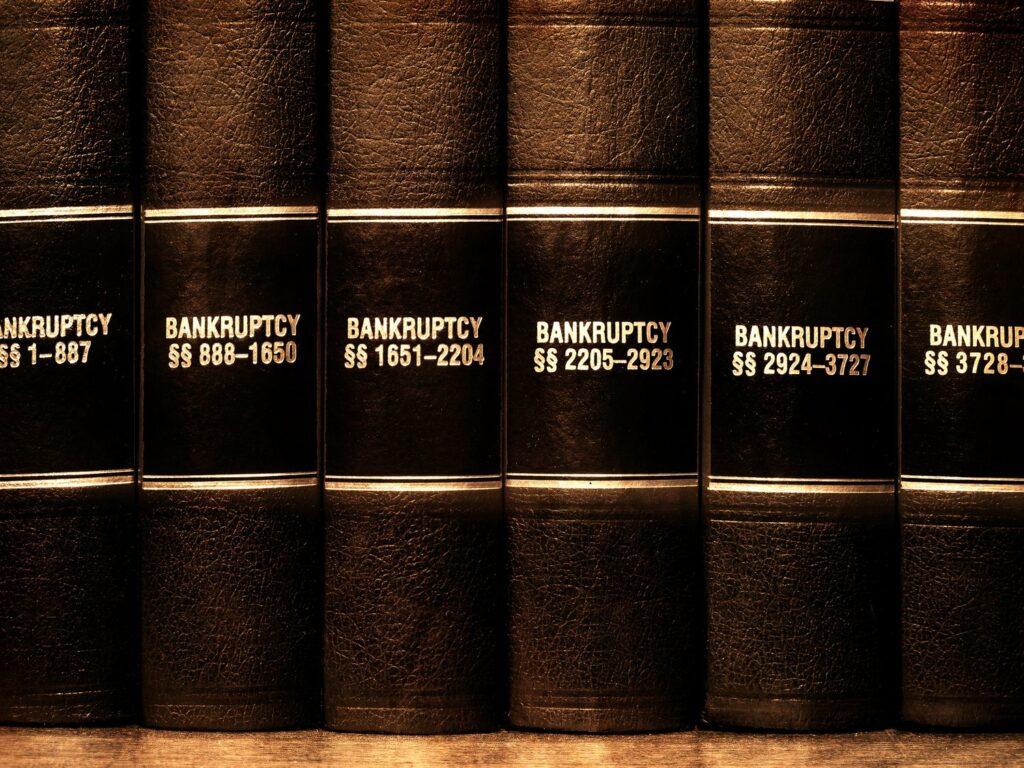Types of Bankruptcy That Can Be Filed in the United States
For individuals or businesses that find themselves deep in debt, bankruptcy can provide the lifeline needed to get a fresh start financially. However, there can be drawbacks and negative ramifications that should be considered before filing. Each chapter of bankruptcy has a specific reason for existing, along with a set structure to address an individual or business’s debt and how to proceed moving forward. It’s important to understand the differences between each chapter so that you can make informed decisions that will give you the knowledge and ability you need to successfully navigate your bankruptcy, with or without the aid of an attorney.
Liquidation vs. Reorganization
Currently, there are six chapters of bankruptcy in the United States: Chapter 7, Chapter 9, Chapter 11, Chapter 12, Chapter 13, and Chapter 15. Chapter 7 and Chapter 13 are the most common bankruptcy filings.
It is worth noting that there is a current proposal entitled Consumer Bankruptcy Reform Act of 2020 (CBRA) that would replace Chapter 7 and Chapter 13 with Chapter 10 and have two options. Those options include a no-payment discharge and a debt-specific repayment plan. The options would be dependent upon an individual’s ability to pay based on variables such as annual income, and assets and would take into consideration minimum payment obligations. We’ll cover the newly proposed CBRA in more depth in the near future.
Of the current chapters of bankruptcy that can be filed, only one, Chapter 7, provides liquidation of debt. This is the most common bankruptcy filed in the United States.
The other remaining 5 chapters of bankruptcy are geared towards reorganizing debt in a manner that allows the filer to repay either all or part of her or his debt.
How Each Bankruptcy Chapter Works
Chapter 7
Commonly referred to as straight or liquidation bankruptcy and known for being the most common bankruptcy filed in the United States, Chapter 7 allows individuals to erase their debt in full. In order to eliminate your debt, you’re required to give up property up to the value of what is owed, that isn’t deemed exempt. Filers are allowed to keep property that is exempt. Exempt property may include items deemed necessary for maintaining an appropriate quality of living and involve items such as motor vehicles up to a certain value, a home, and clothing. Property that is usually less likely to be exempt would include a vacation home, recreation-type items, collectibles, and even some investments.
You can obtain specific information as it relates to exemptions by speaking with a qualified bankruptcy attorney in your area.
Chapter 9
Designed for municipalities (counties, towns, cities, school districts, boroughs for example), Chapter 9 bankruptcies create a plan for adjusting and paying municipal debts on modified terms. This process typically allows for an extended repayment period from the original obligations. As you can see below, Chapter 9 bankruptcy filings are fairly uncommon in the United States with only six cases filed in 2019.
Chapter 11
Known as the reorganization bankruptcy, Chapter 11 is available to businesses and individuals with unusually high debt. The debtor typically proposes a reorganized debt repayment plan that allows the business to remain open and pay creditors back over an extended period of time.
Chapter 12
Designed for family farmers or family fishermen to restructure their finances in order to propose an installment plan that repays creditors over a three- to five-year period, chapter 12 is designed to protect family farms and fishermen during debt restructuring and was designed to help alleviate hardship during economic uncertainty.
Chapter 13
Also known as the wage earner’s plan, Chapter 13 allows individuals with consistent and regular income to create a plan to repay their debts either in full or partially over a three to five-year period. Unlike many filing a Chapter 7 petition, individuals that file Chapter 13 have an opportunity to prevent their homes from entering foreclosure.
Chapter 15
Newly added to the United States Bankruptcy Code in 2005, Chapter 15 was created to help cases that involve more than a single country. The primary purpose of Chapter 15 is to encourage cooperation between a foreign court or debtor and the United States courts. If a debtor has debt and assets in a number of different countries, they will likely file Chapter 15.
What Type of Bankruptcy is Right for You?
If you’re interested in filing for bankruptcy protection, we highly recommend that you speak with a well-qualified bankruptcy attorney. For many, the bankruptcy process is confusing, especially due to scarcely used terminology and various legal ramifications that fall outside of the routine day-to-day scope of our typical lives.
Income and assets will determine the bankruptcy chapter that you file. An individual with too much income would likely be unable to file Chapter 7. However, an individual that doesn’t want to lose property that they’d otherwise lose by filing for Chapter 7, would likely consider filing Chapter 13.
There are numerous considerations to make when determining what chapter to utilize when filing for bankruptcy protection, and speaking with an attorney is a prudent and smart choice.
If you believe you are unable to afford an attorney, you can still represent yourself as a “pro se” debtor. This essentially means you don’t need an attorney to file bankruptcy and can represent yourself. Whichever choice you make, we recommend that you take an active role in learning about the bankruptcy system and how it can help your situation specifically. Information you learn during the bankruptcy process can also be used to help you avoid debt-related problems in the future.
Filing Bankruptcy in America: Four-Part Series
Money Fit by DRS Inc. is publishing a four-part series to explain the bankruptcy process in great detail. We intend to create a guide for individuals looking to understand the bankruptcy process so they can make informed decisions on whether this is an alternative to dealing with their debt that they should explore further.
Read About Bankruptcy In America
Related Content:
What to do if you can afford to file for bankruptcy








